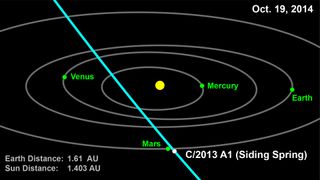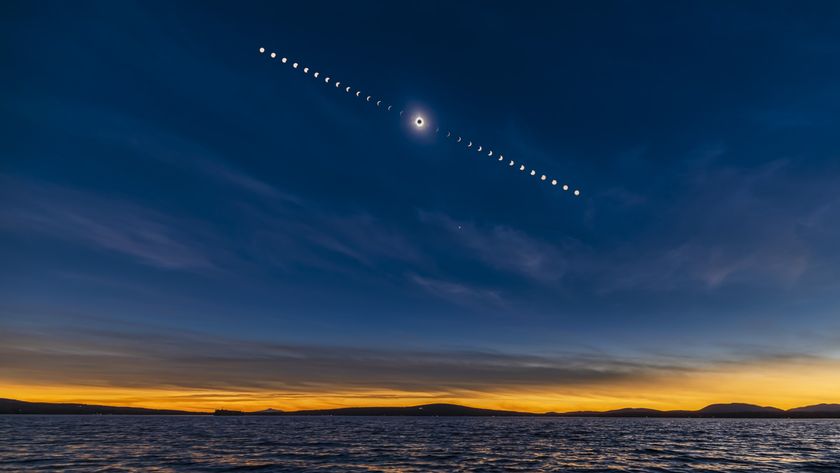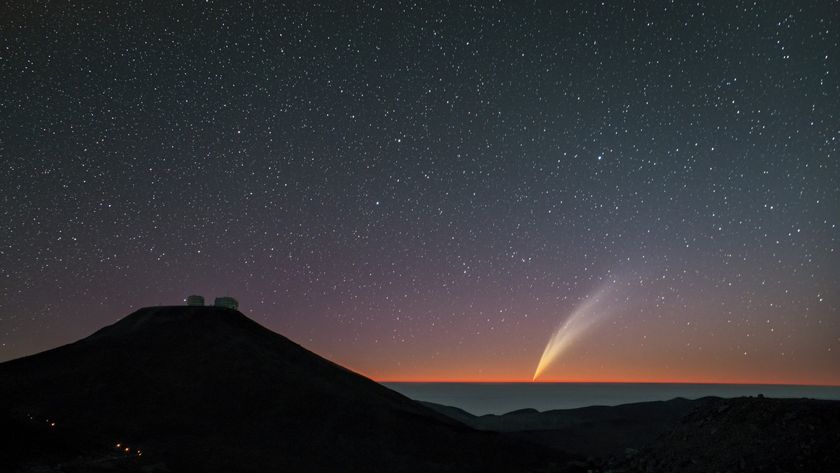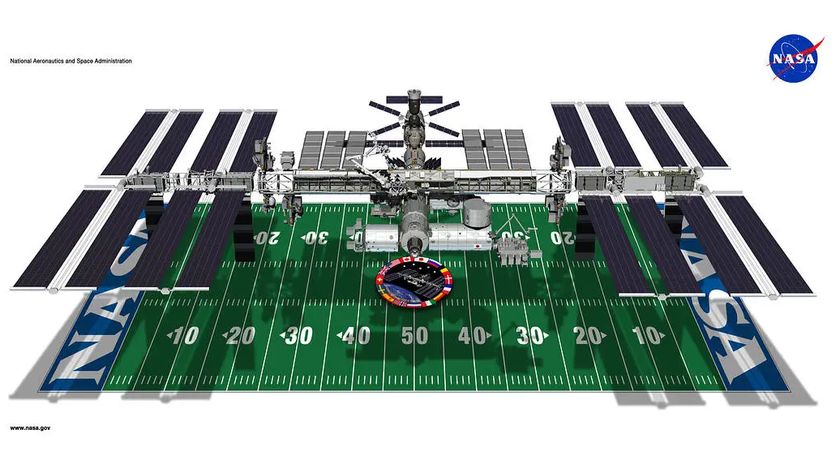
A comet that had a slim chance of crashing into Mars in 2014 will almost certainly fly harmlessly past the Red Planet, scientists say.
NASA researchers had given Comet C/2013 A1 (Siding Spring) a 1-in-8,000 chance of striking the Red Planet in October 2014, but revised calculations now put the possibility of an impact at just 1 in 120,000.
While the odds of a Mars comet strike are now exceedingly remote, the new information also suggests that Siding Spring will fly closer to the planet than originally expected.
"Based on data through April 7, 2013, the latest orbital plot places the comet's closest approach to Mars slightly closer than previous estimates, at about 68,000 miles (110,000 kilometers)," NASA officials wrote in a statement on Friday (April 12).

It is possible that the fleet of NASA spacecraft on and orbiting Mars will be able to catch sight of the passing comet, but it might be challenging.
"The issue with Mars Odyssey and the Mars Reconnaissance Orbiter will be the ability to point them in the right direction; they are used to looking down, not up," Jim Bell, a planetary scientist and Mars imaging specialist at Arizona State University, said in a statement. "Mission designers will have to figure out if that is possible."
NASA's Opportunity and Curiosity rovers also might have difficulty observing the event.
Get the Space.com Newsletter
Breaking space news, the latest updates on rocket launches, skywatching events and more!
"Opportunity is solar-powered and so would need to dip into reserve battery power to operate the cameras at night," Bell said. "Whether or not we will be able to do this will depend on how much power the rover is getting from dusty solar panels in the daytime. On the other hand, Curiosity is nuclear-powered, so it could have better odds at night-time imaging."
Comet Siding Spring will make its closest approach to Mars on Oct. 19, 2014, according to NASA officials.
The comet was discovered on Jan. 3, 2013 by astronomer Robert McNaught using the Siding Spring Survey Observatory in Australia, during a search for asteroids that might pose a threat to Earth.
Follow us @Spacedotcom, Facebook and Google+. Original article on SPACE.com.
Join our Space Forums to keep talking space on the latest missions, night sky and more! And if you have a news tip, correction or comment, let us know at: community@space.com.

Space.com is the premier source of space exploration, innovation and astronomy news, chronicling (and celebrating) humanity's ongoing expansion across the final frontier. Originally founded in 1999, Space.com is, and always has been, the passion of writers and editors who are space fans and also trained journalists. Our current news team consists of Editor-in-Chief Tariq Malik; Editor Hanneke Weitering, Senior Space Writer Mike Wall; Senior Writer Meghan Bartels; Senior Writer Chelsea Gohd, Senior Writer Tereza Pultarova and Staff Writer Alexander Cox, focusing on e-commerce. Senior Producer Steve Spaleta oversees our space videos, with Diana Whitcroft as our Social Media Editor.
Most Popular




